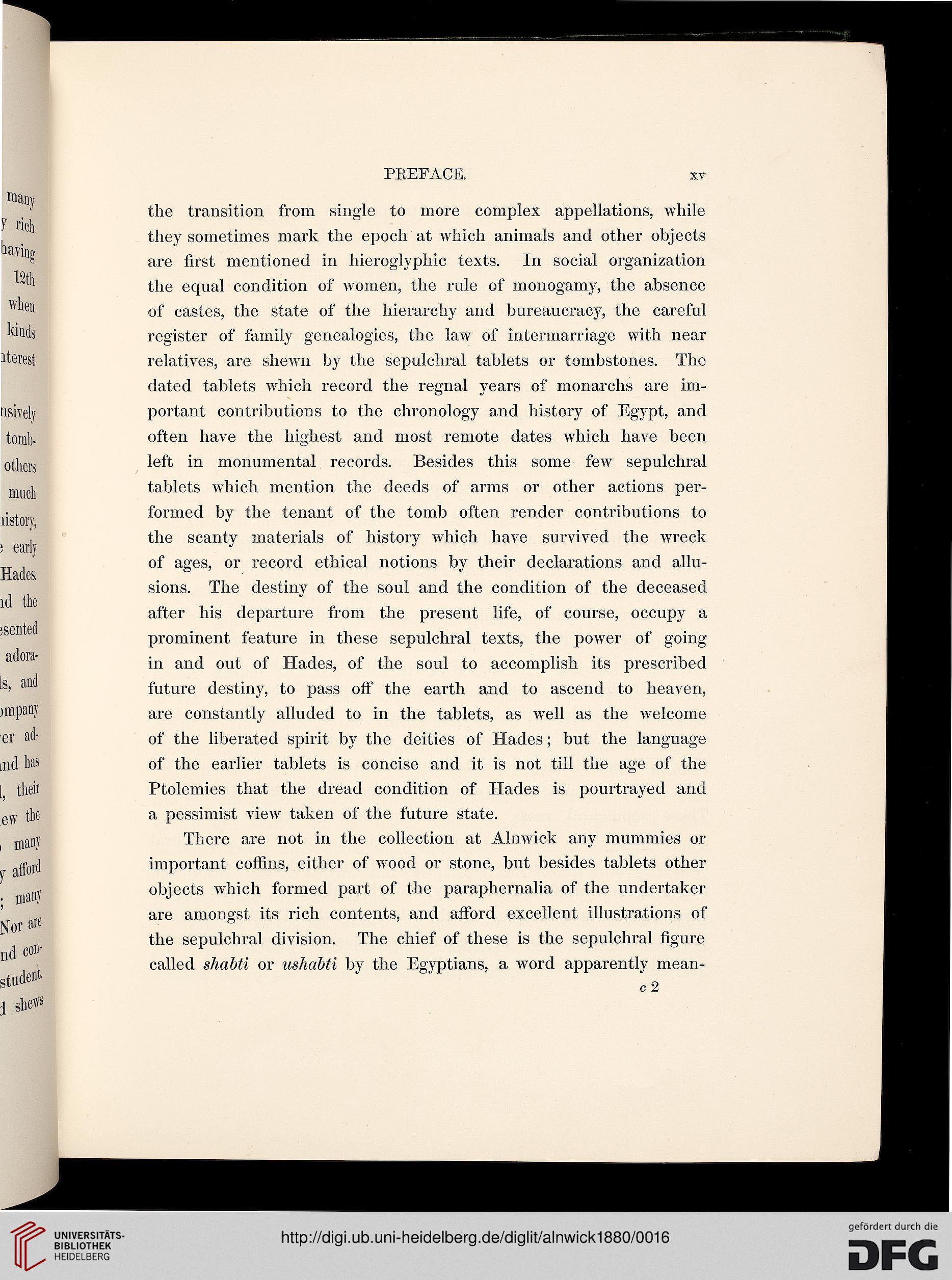PEEFACE.
xv
the transition from single to more complex appellations, while
they sometimes mark the epoch at which animals and other objects
are first mentioned in hieroglyphic texts. In social organization
the equal condition of women, the rule of monogamy, the absence
of castes, the state of the hierarchy and bureaucracy, the careful
register of family genealogies, the law of intermarriage with near
relatives, are shewn by the sepulchral tablets or tombstones. The
dated tablets which record the regnal years of monarchs are im-
portant contributions to the chronology and history of Egypt, and
often have the highest and most remote dates which have been
left in monumental records. Besides this some few sepulchral
tablets which mention the deeds of arms or other actions per-
formed by the tenant of the tomb often render contributions to
the scanty materials of history which have survived the wreck
of ages, or record ethical notions by their declarations and allu-
sions. The destiny of the soul and the condition of the deceased
after his departure from the present life, of course, occupy a
prominent feature in these sepulchral texts, the power of going
in and out of Hades, of the soul to accomplish its prescribed
future destiny, to pass off the earth and to ascend to heaven,
are constantly alluded to in the tablets, as well as the welcome
of the liberated spirit by the deities of Hades; but the language
of the earlier tablets is concise and it is not till the age of the
Ptolemies that the dread condition of Hades is pourtrayed and
a pessimist view taken of the future state.
There are not in the collection at Alnwick any mummies or
important coffins, either of wood or stone, but besides tablets other
objects which formed part of the paraphernalia of the undertaker
are amongst its rich contents, and afford excellent illustrations of
the sepulchral division. The chief of these is the sepulchral figure
called shabti or ushabtl by the Egyptians, a word apparently mean-
c 2
xv
the transition from single to more complex appellations, while
they sometimes mark the epoch at which animals and other objects
are first mentioned in hieroglyphic texts. In social organization
the equal condition of women, the rule of monogamy, the absence
of castes, the state of the hierarchy and bureaucracy, the careful
register of family genealogies, the law of intermarriage with near
relatives, are shewn by the sepulchral tablets or tombstones. The
dated tablets which record the regnal years of monarchs are im-
portant contributions to the chronology and history of Egypt, and
often have the highest and most remote dates which have been
left in monumental records. Besides this some few sepulchral
tablets which mention the deeds of arms or other actions per-
formed by the tenant of the tomb often render contributions to
the scanty materials of history which have survived the wreck
of ages, or record ethical notions by their declarations and allu-
sions. The destiny of the soul and the condition of the deceased
after his departure from the present life, of course, occupy a
prominent feature in these sepulchral texts, the power of going
in and out of Hades, of the soul to accomplish its prescribed
future destiny, to pass off the earth and to ascend to heaven,
are constantly alluded to in the tablets, as well as the welcome
of the liberated spirit by the deities of Hades; but the language
of the earlier tablets is concise and it is not till the age of the
Ptolemies that the dread condition of Hades is pourtrayed and
a pessimist view taken of the future state.
There are not in the collection at Alnwick any mummies or
important coffins, either of wood or stone, but besides tablets other
objects which formed part of the paraphernalia of the undertaker
are amongst its rich contents, and afford excellent illustrations of
the sepulchral division. The chief of these is the sepulchral figure
called shabti or ushabtl by the Egyptians, a word apparently mean-
c 2





